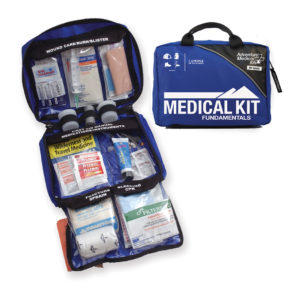 When planning for a grid down situation and heading to one’s bug out location, much of the discussion centers around food storage, shelter and firearms. However, an equally important component is that of medical treatment. If such a situation should arise, you need to be able to handle major medical emergencies without a doctor. This post isn’t a lesson on specific medical techniques, but intended to prompt you to take a course, read and assemble a good first aid kit.
When planning for a grid down situation and heading to one’s bug out location, much of the discussion centers around food storage, shelter and firearms. However, an equally important component is that of medical treatment. If such a situation should arise, you need to be able to handle major medical emergencies without a doctor. This post isn’t a lesson on specific medical techniques, but intended to prompt you to take a course, read and assemble a good first aid kit.
First of all, every house should have a substantial first aid kit and you should know how to use what’s in it. Second every vehicle you own should have at least a small travel first aid kit. Third, if you have a bug out bag, then it should have a kit. I tend to prefer creating my own kits rather than buying one already assembled off the shelf. However, you can’t beat the convenience, but off the shelf kits tend to miss some very important items.
If you have a firearm and are prepared to use it, you should be prepared to handle major trauma. That could happen by accident at the shooting range as well as in an encounter with an intruder. A more likely possibility is an injury while operating a chainsaw to cut firewood or downed trees after a major storm. The Israeli Battle Dressing is the foundation of a good trauma kit. Its an ingenious design of flexible bandaging gauze that has two unique cinching points that maintain pressure on the wound and allow you to apply it without tape or use of scissors. For a great YouTube instructional video, click here.
Another very important trauma treatment item is a Halo Occlusive Seal. Sounds fancy, but basically its a super band aid for a “sucking chest wound”. This kind of would sometimes happens as a result of a gunshot to the chest that penetrates a lung. There is one entry wound and possibly an exit wound. As the victim breathes, air is sucked in through the wound and out, thus collapsing the lung. Makes it nearly impossible to breath and support oxygen flow to the body. A Halo (brand name) seal is a large adhesive seal that is placed over the would to stop the flow of air. However, if one is not available, you can even use a plastic bag with duct tape. Basically you want to seal off the wound by covering an area at least two inches around the wound.
Hopefully you’ll never need to use such items, but it pays to be prepared. So go out and make sure you are well stocked in the first aid department. Every survival property or bug out location should have plenty.




